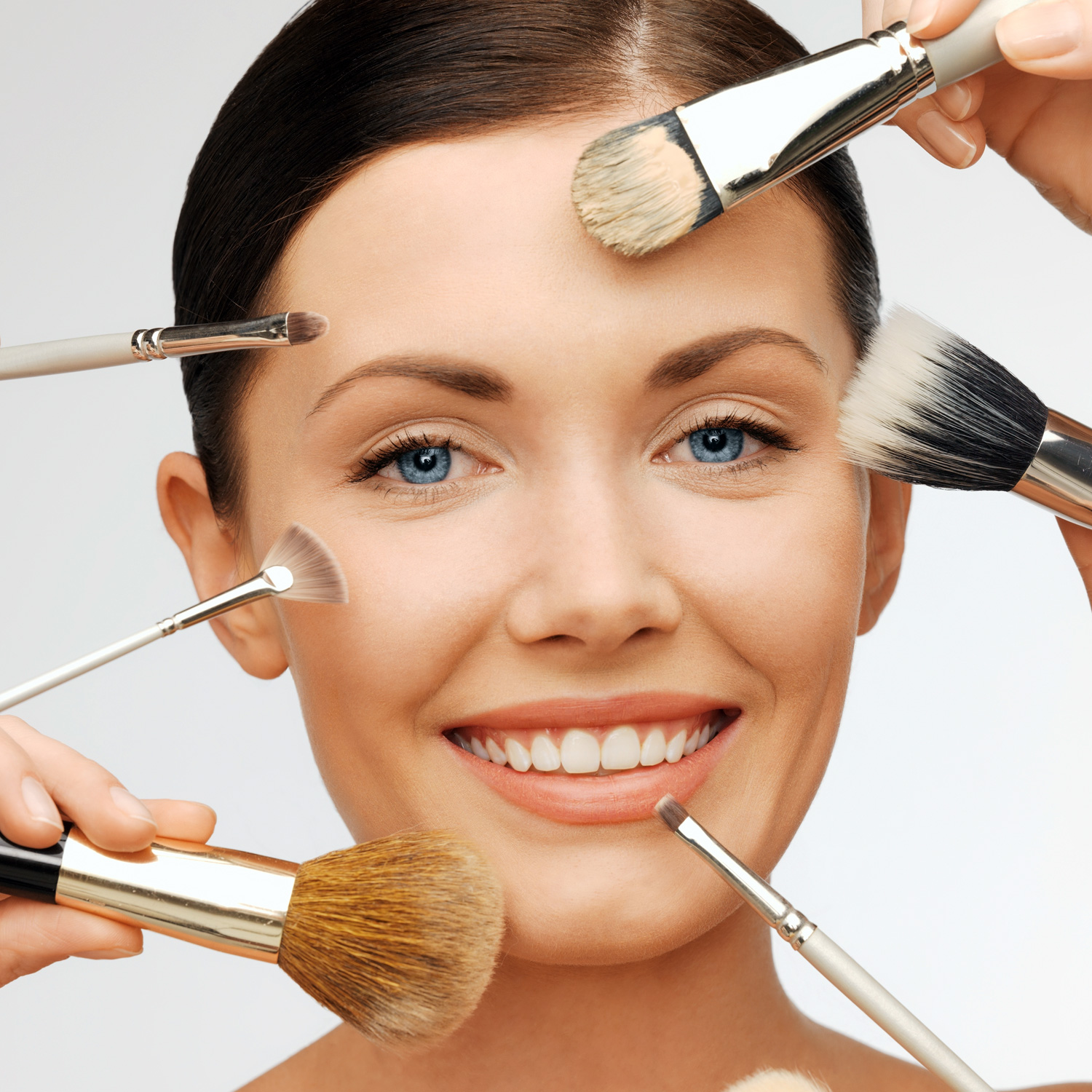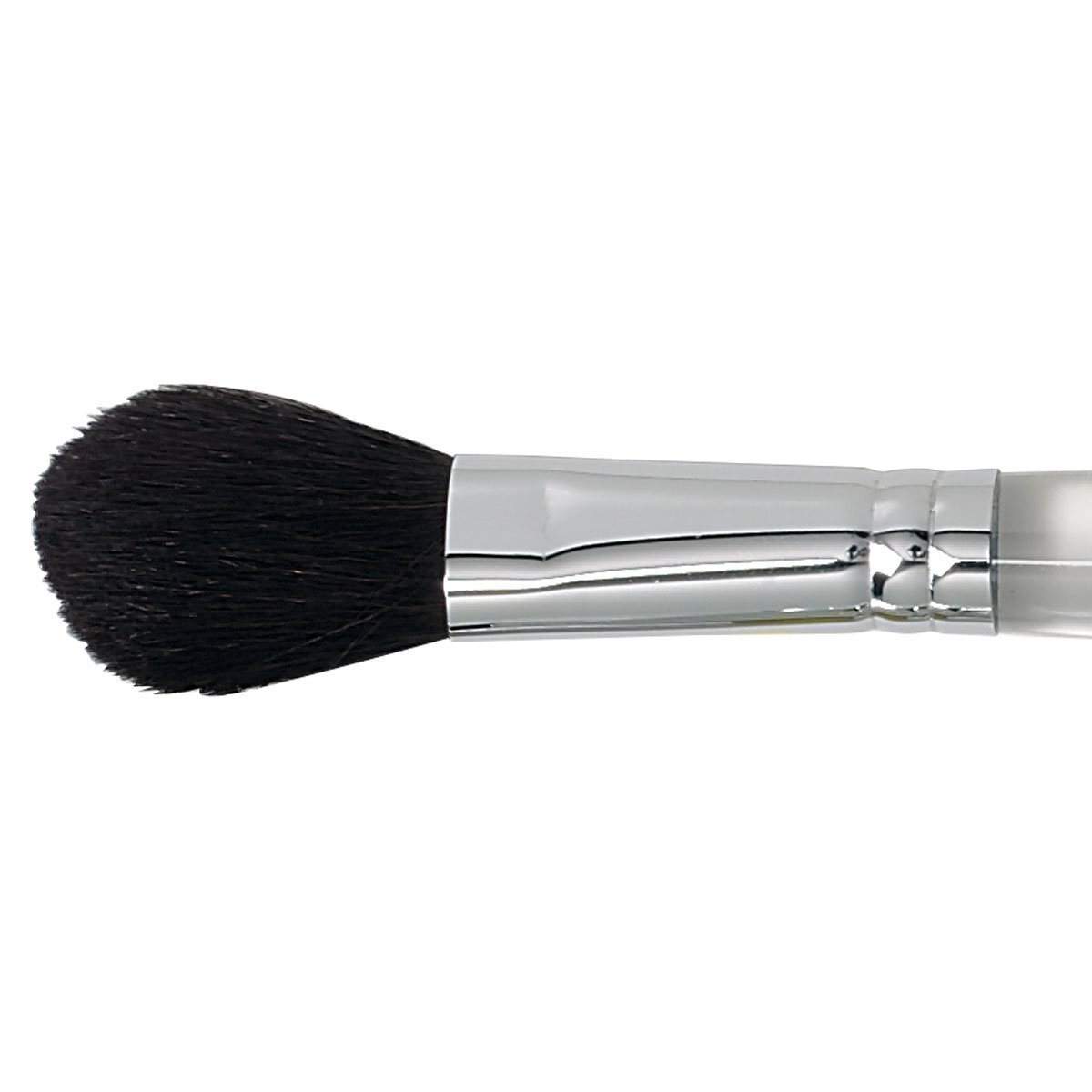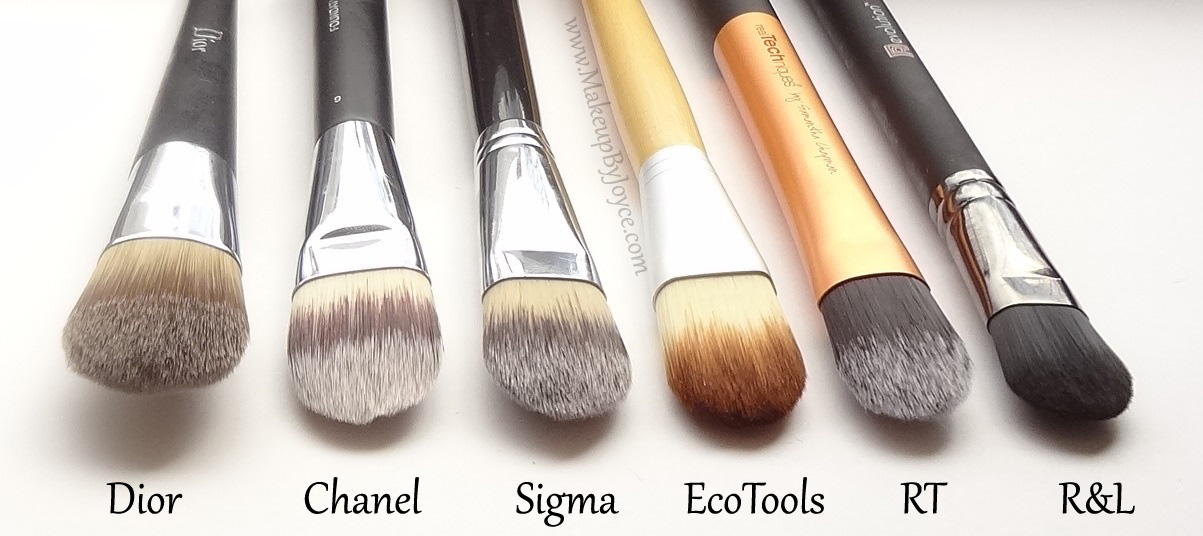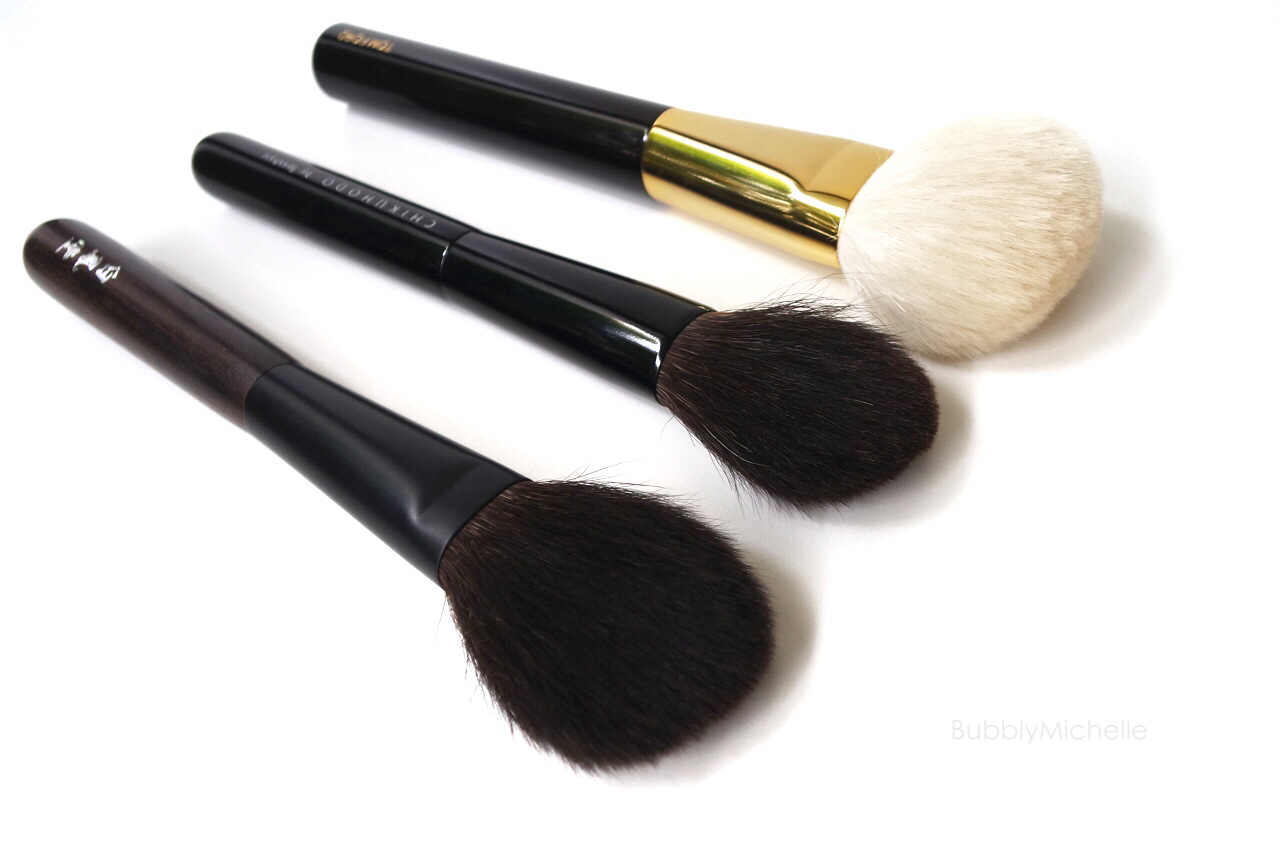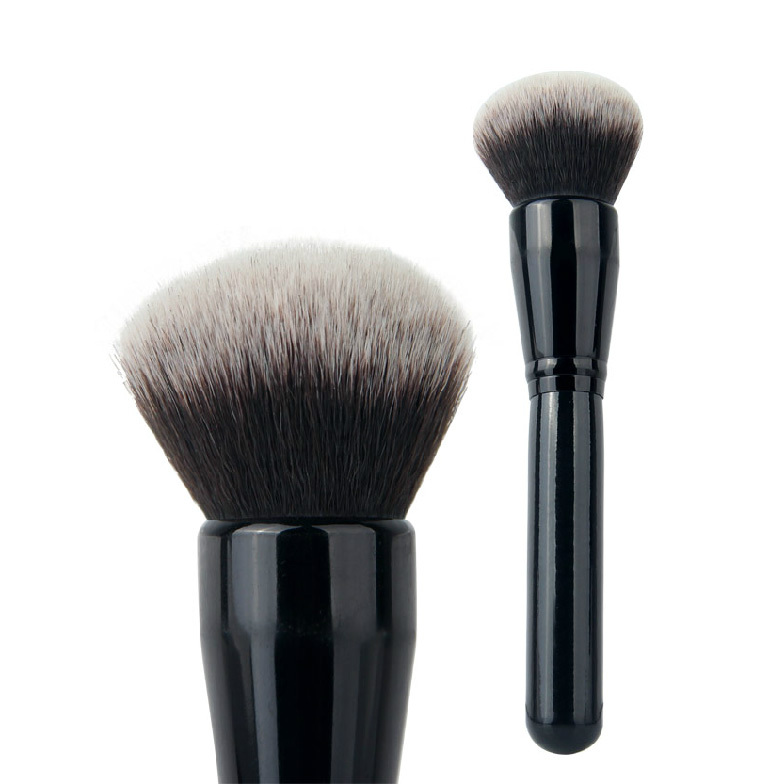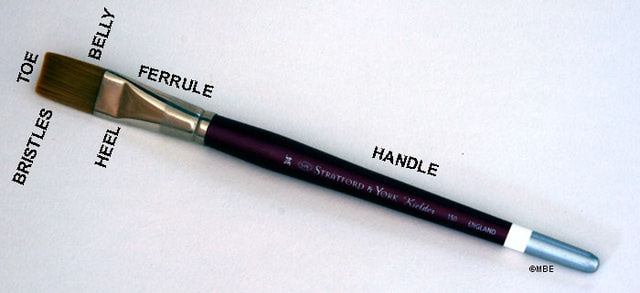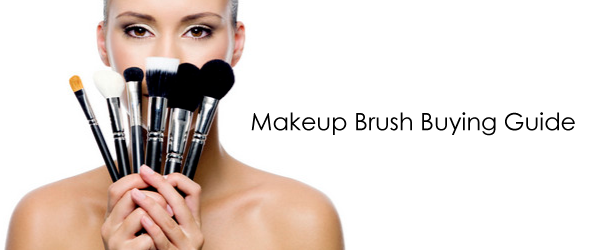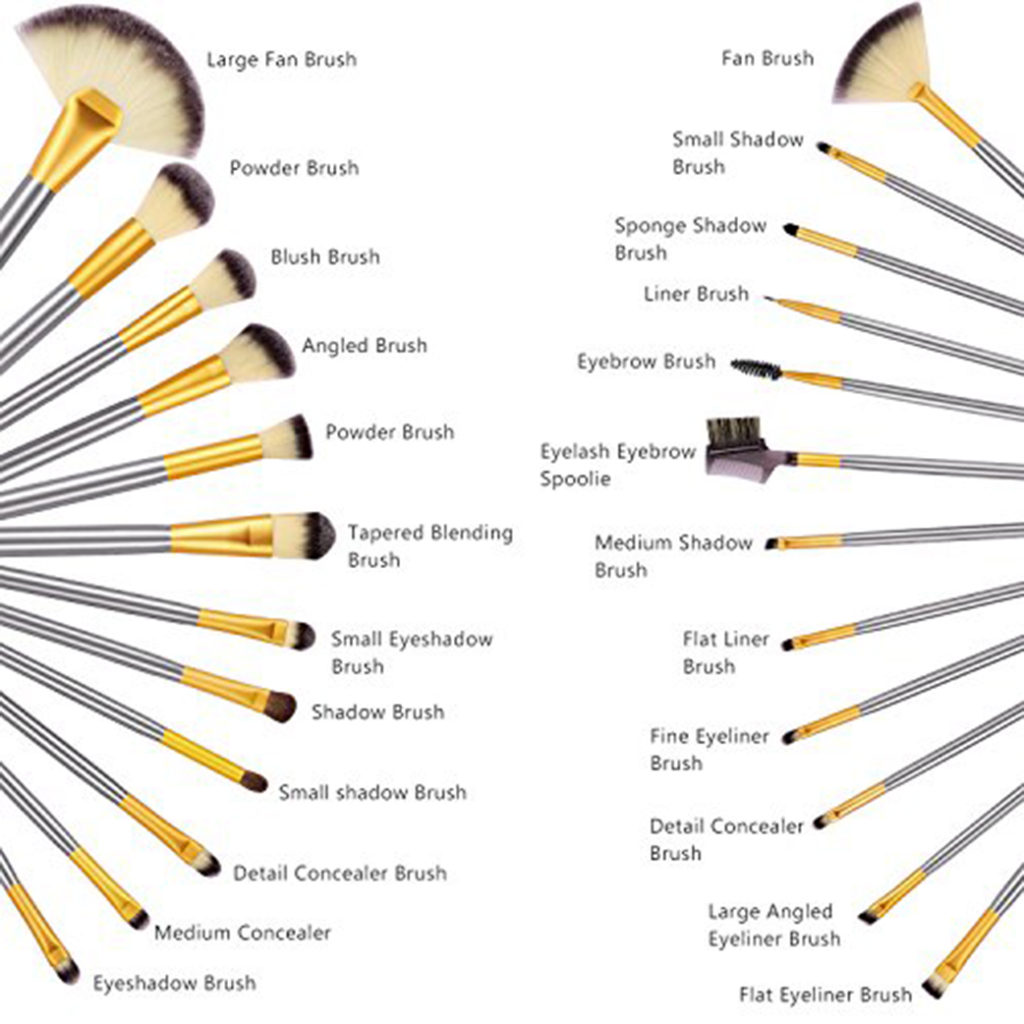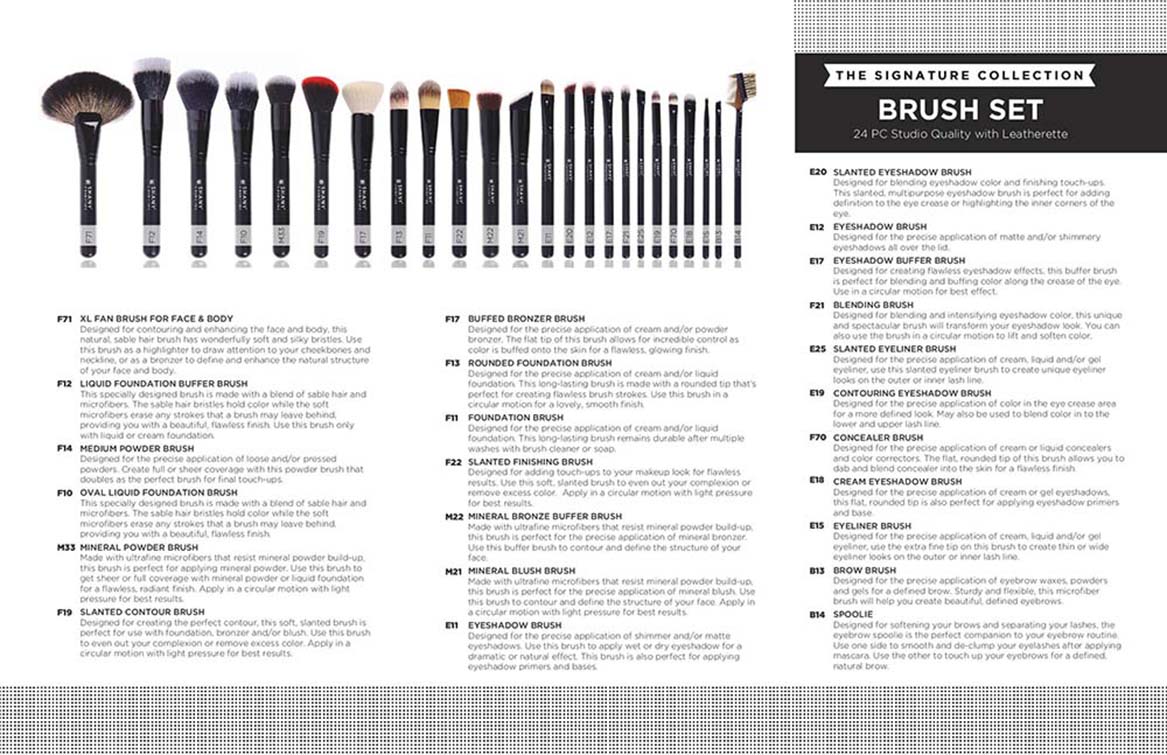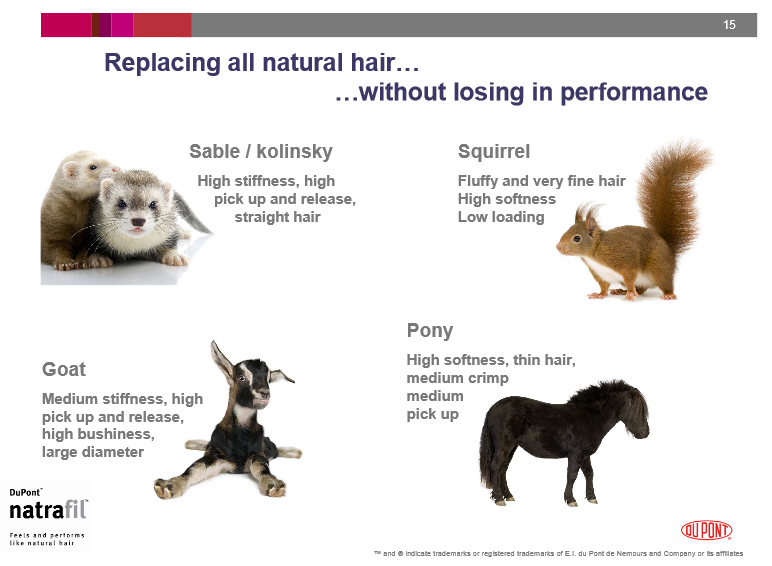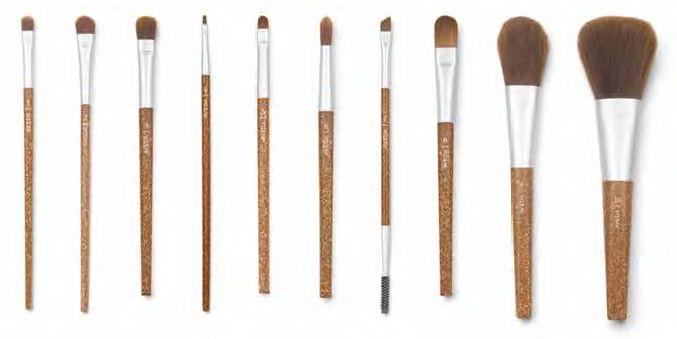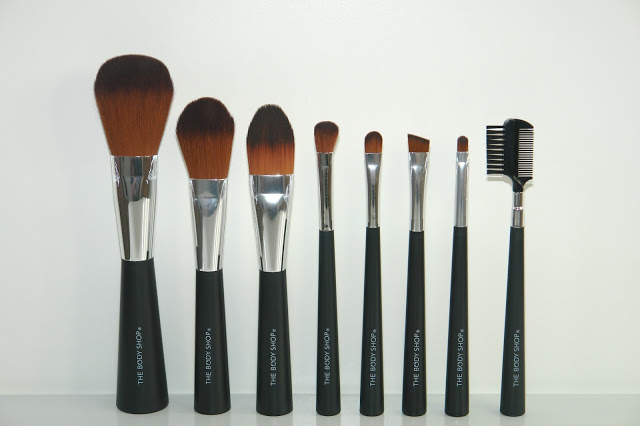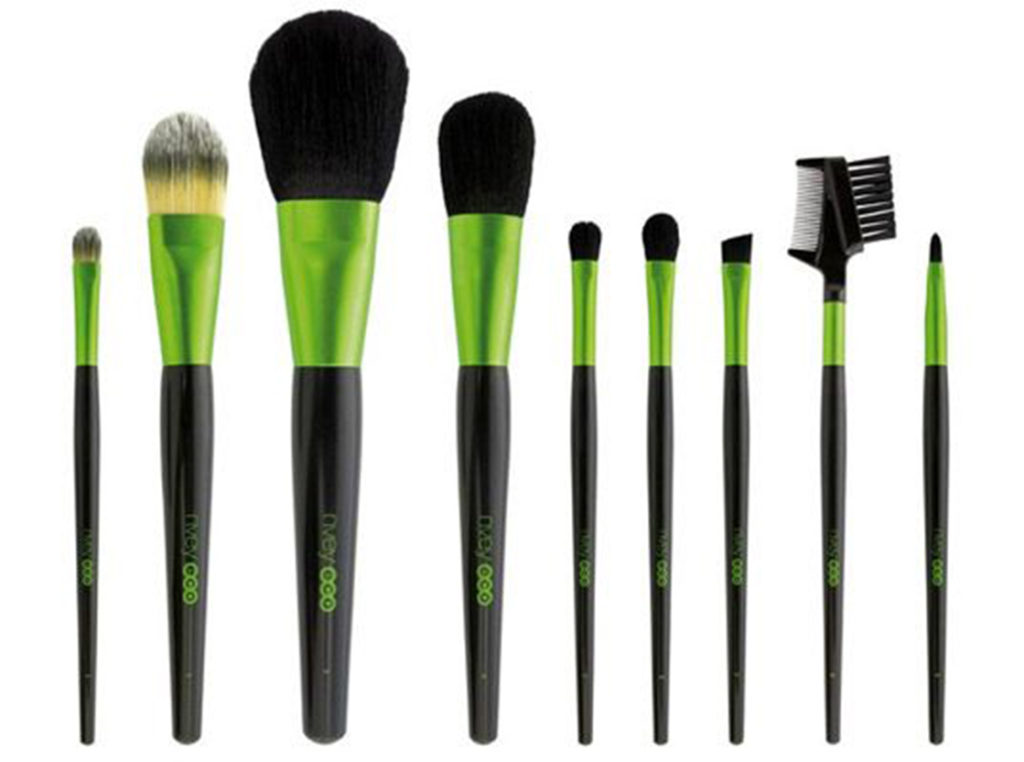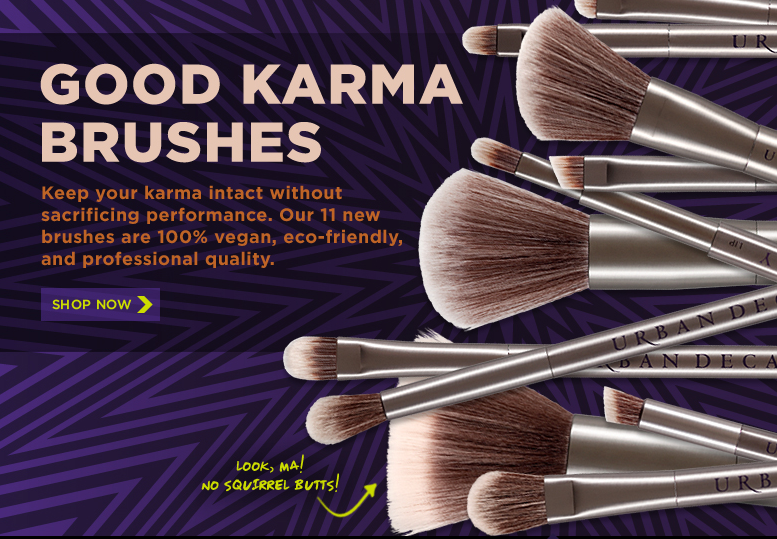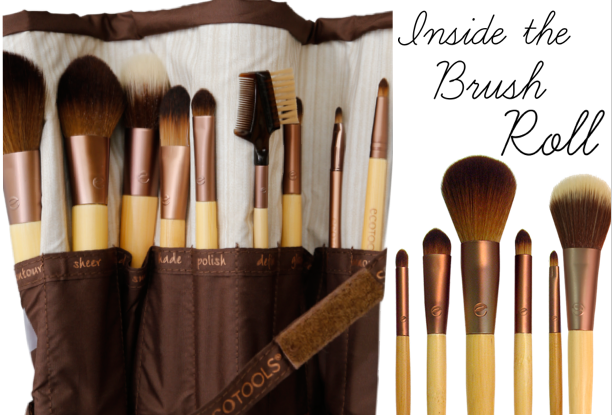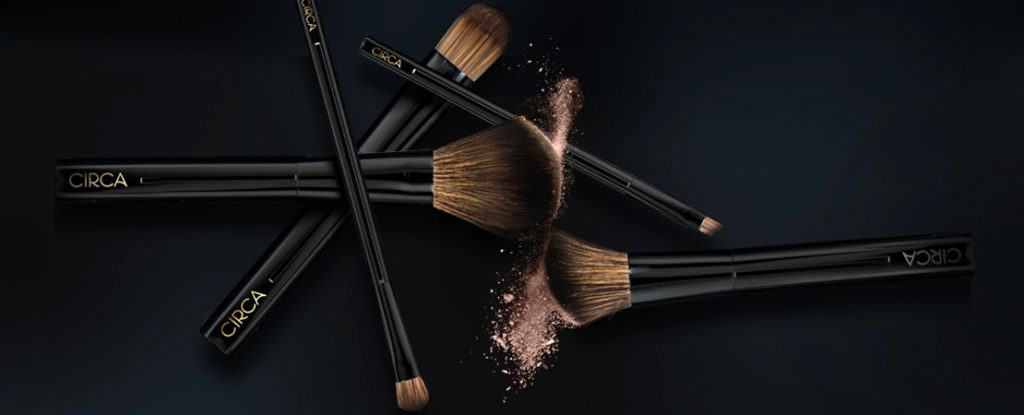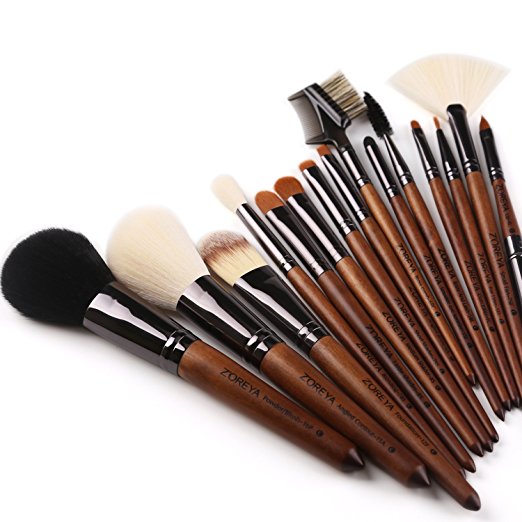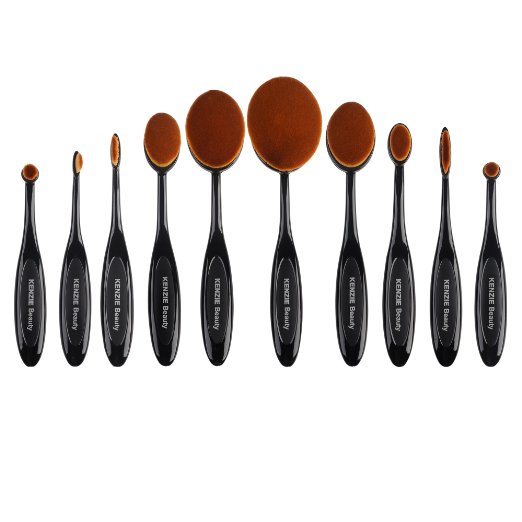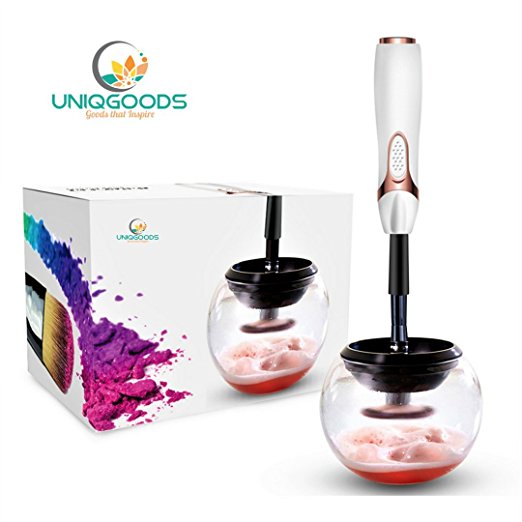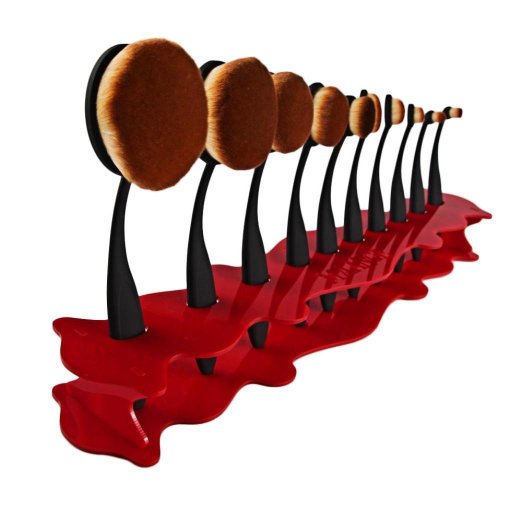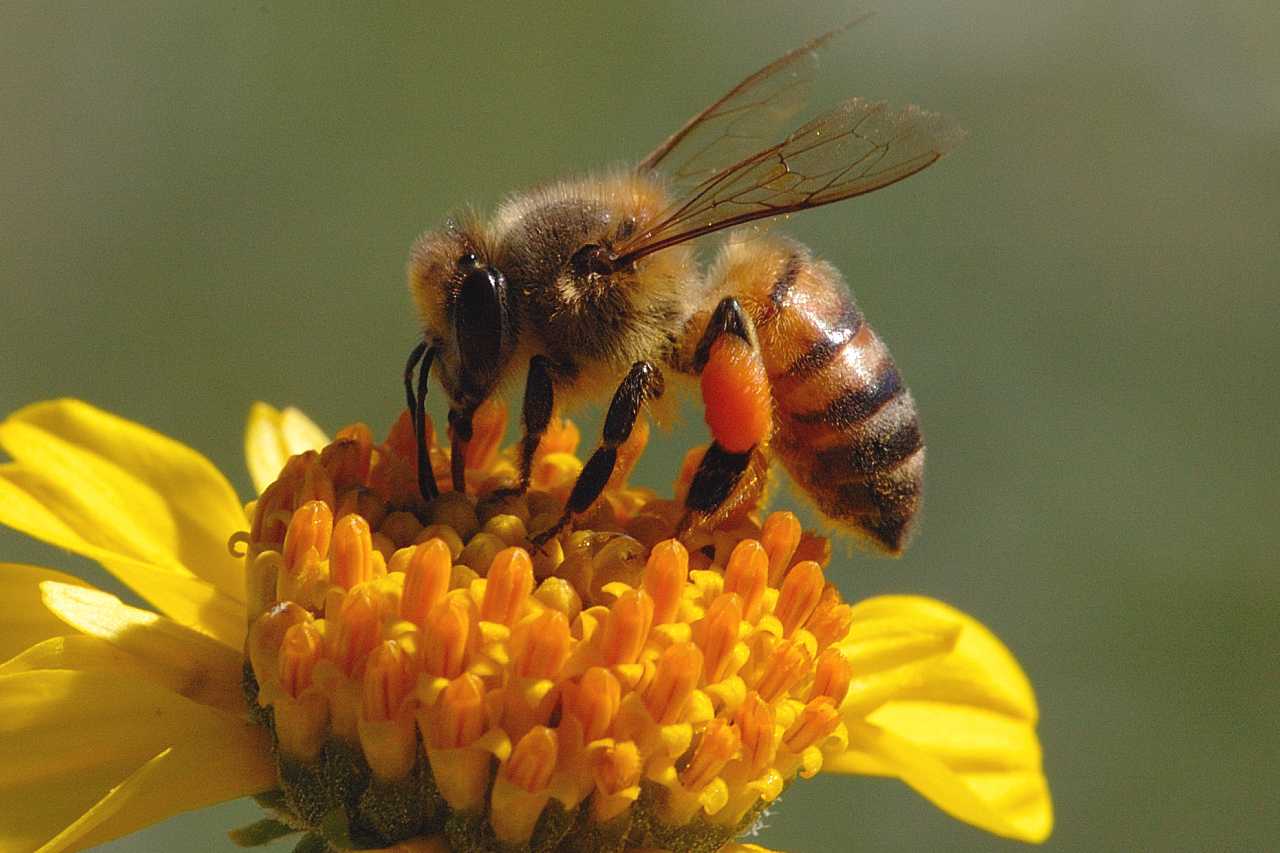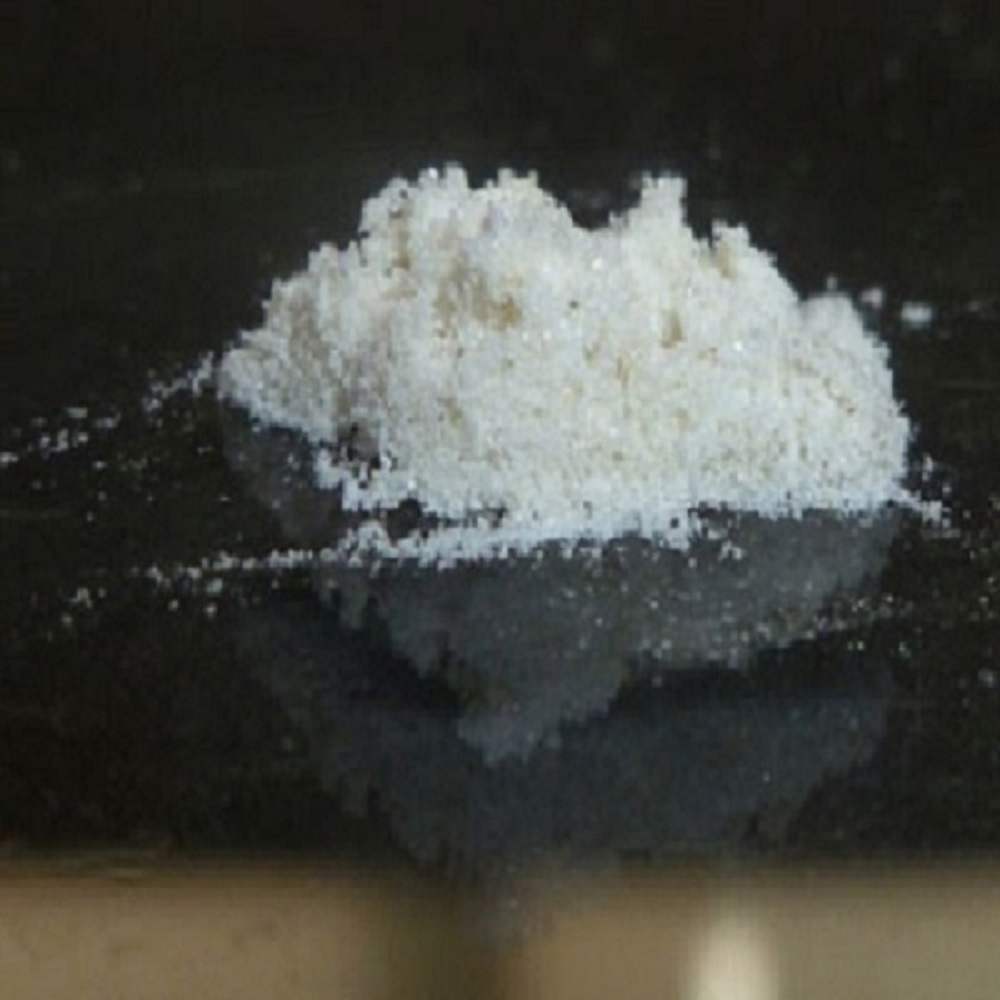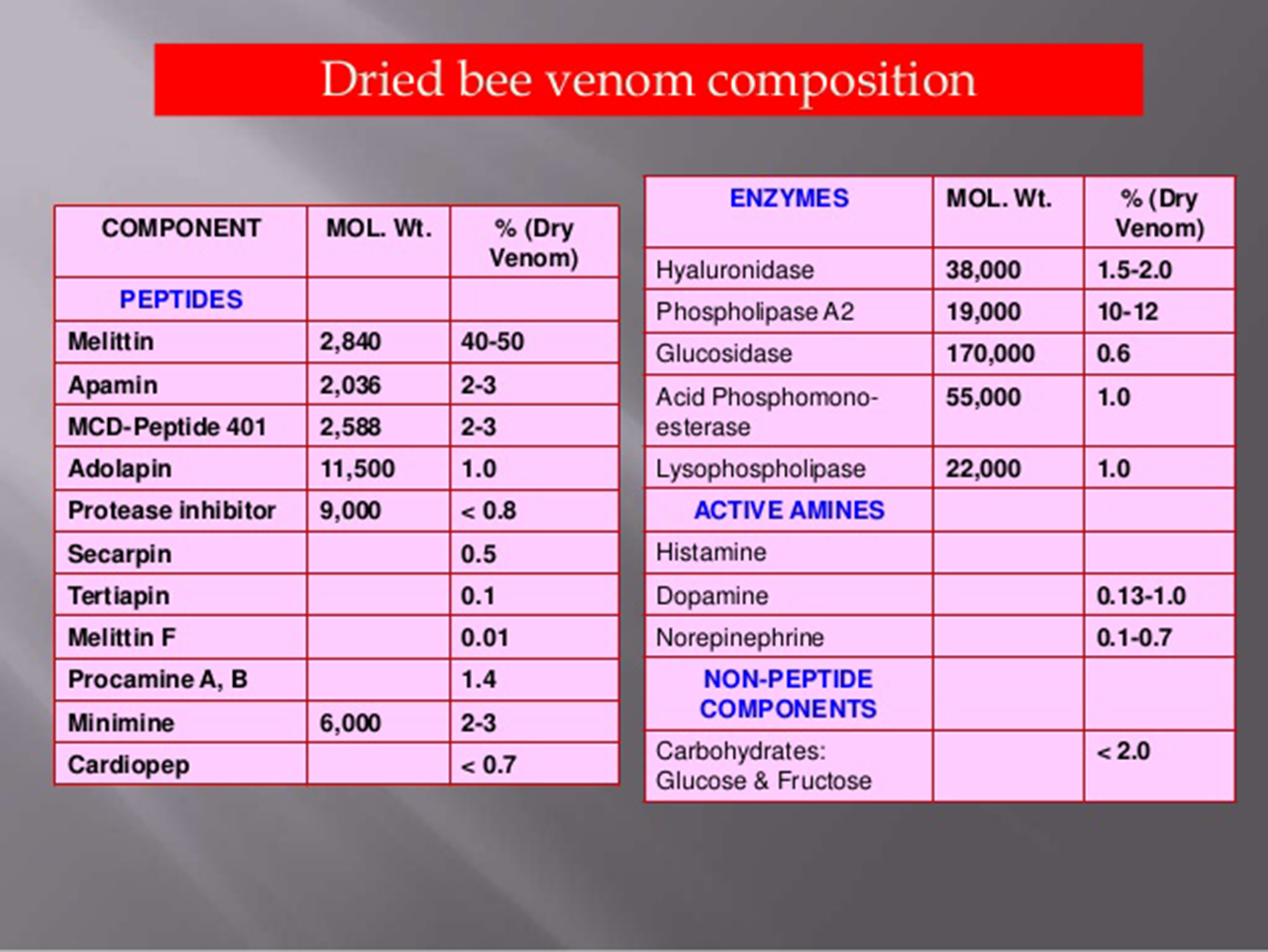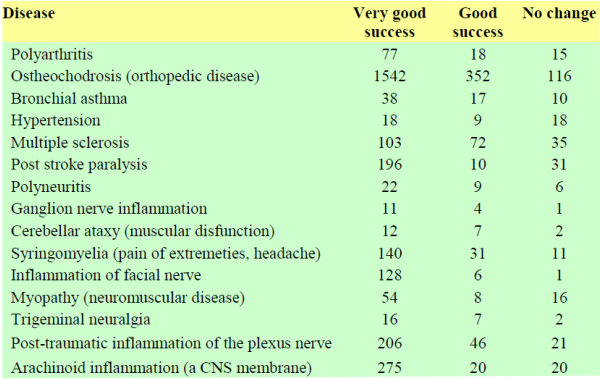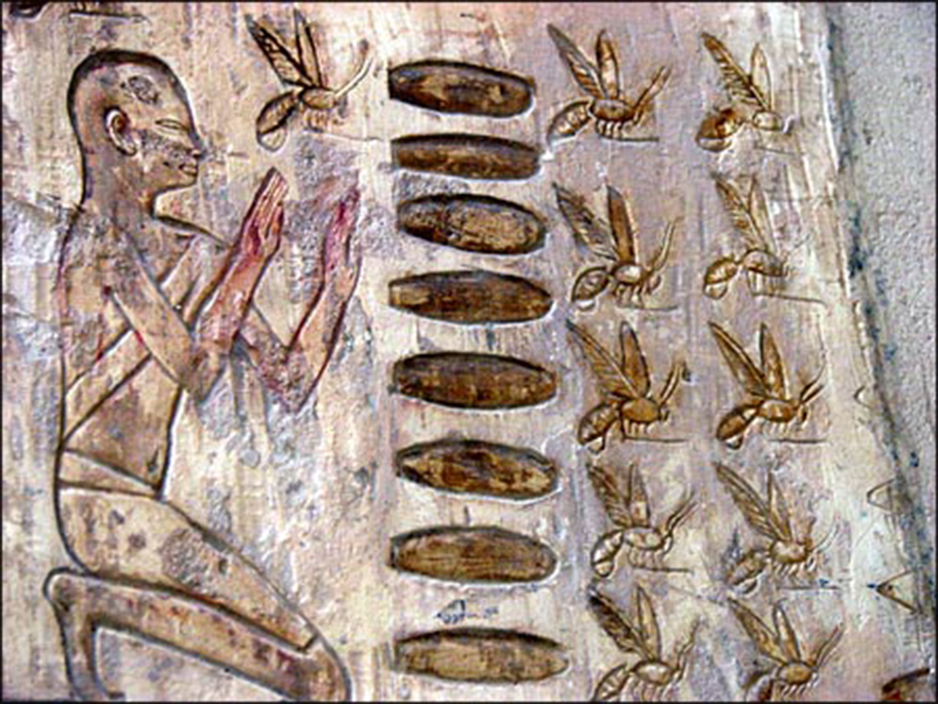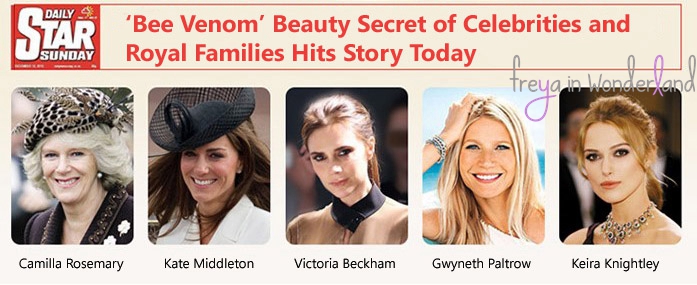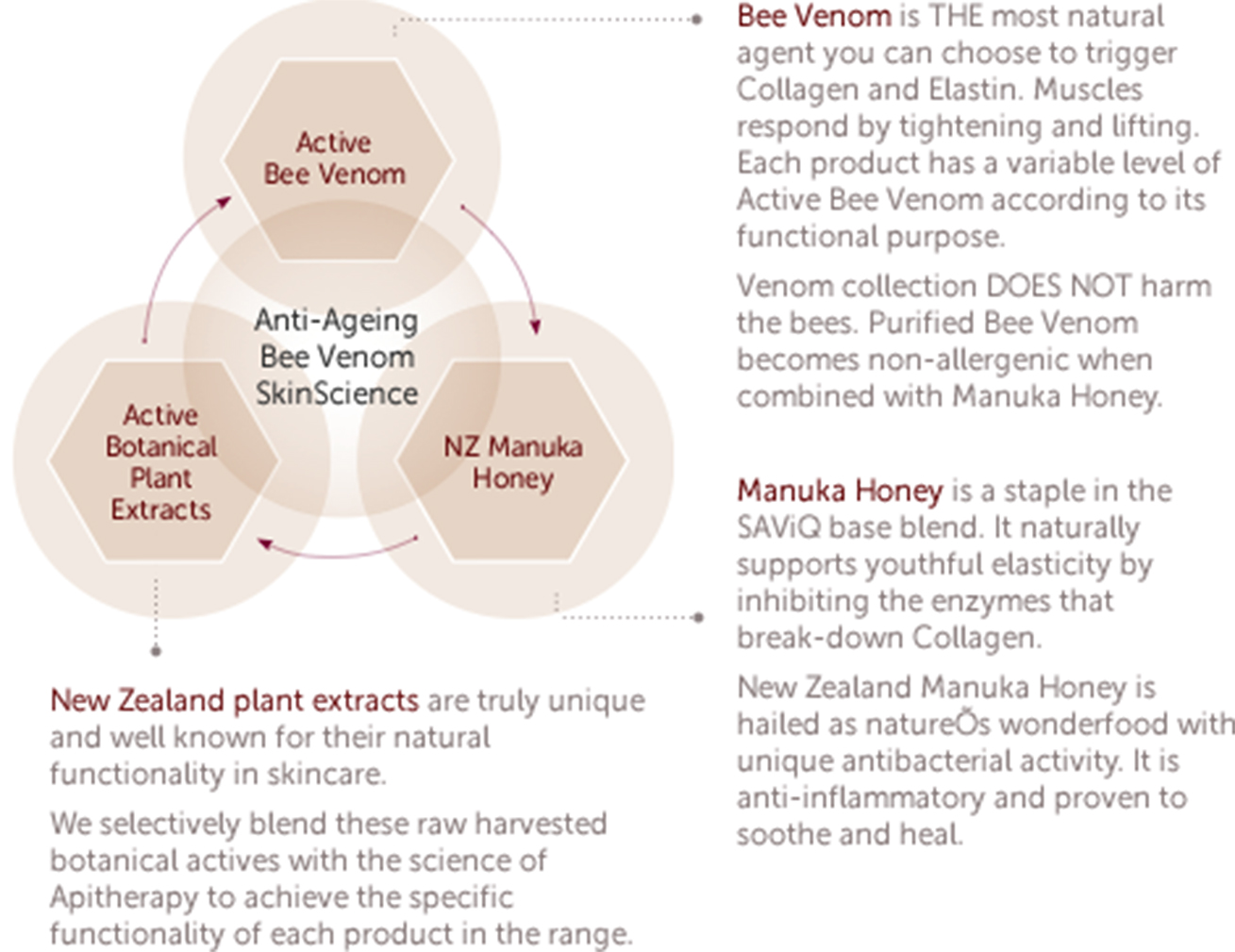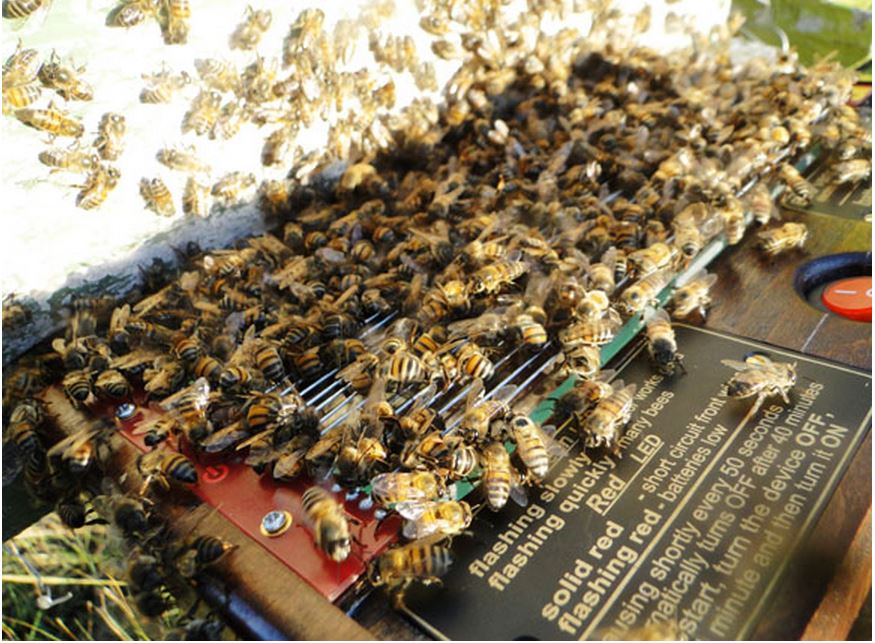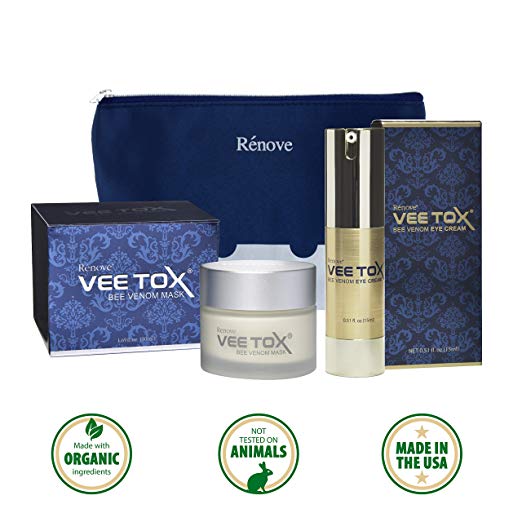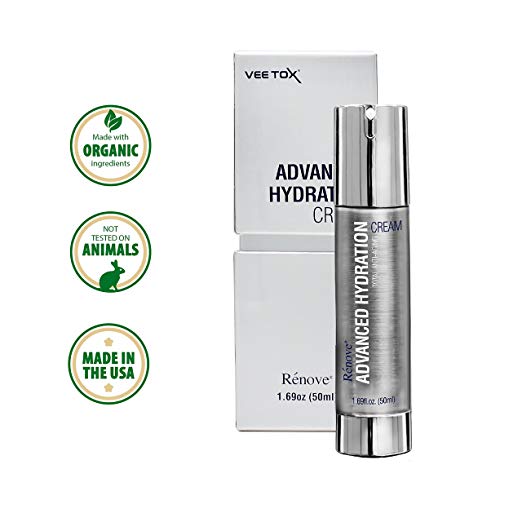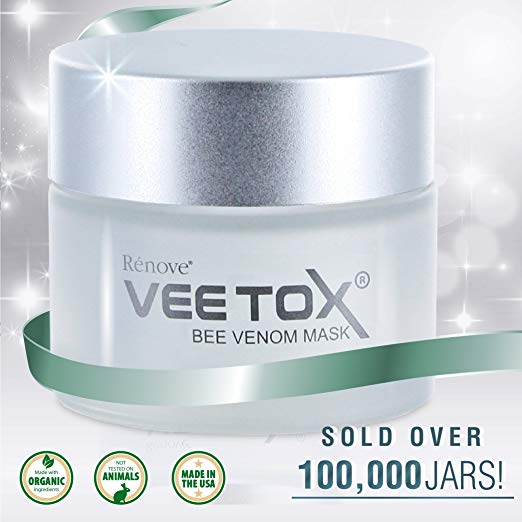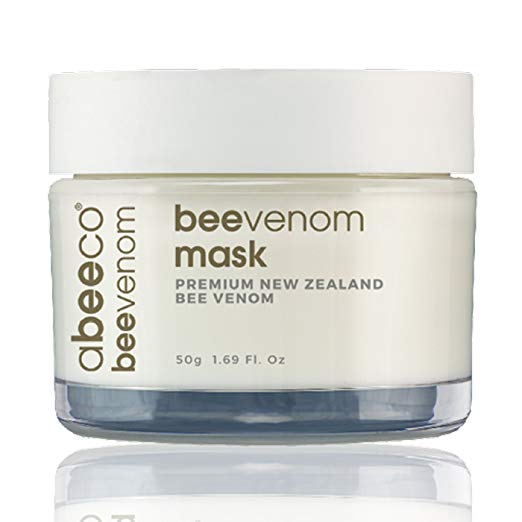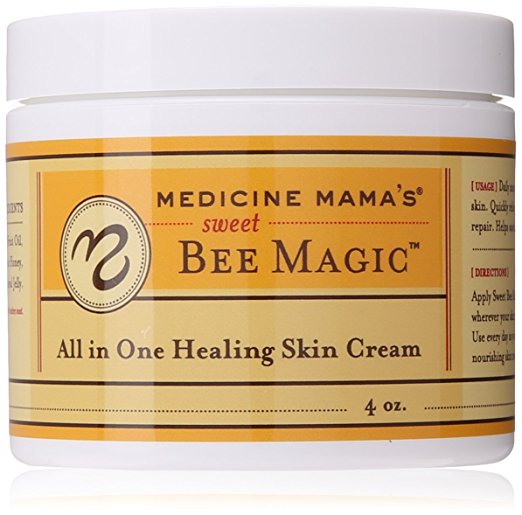Synthetic or Animal Make Up Brushes?
Make-up Brushes
Hello, and thank you for your support, likes, and share without it we wouldn’t be here. On week 299. We are sharing a post about the difference between Synthetic and animal hair brushes, how to clean the brushes and their different uses. Here we will share the common uses, so if we miss a fact please let us know so we can pass it along to our readers, we will give you credit for the contribution send your additions to isabelsbeautyblog@gmail.com.
I personally love using a good brush to apply makeup, and as the years in my career go by I notice that my make up peers all have a favorite brush, sponge and my dear friend Carme Tenuta loves to use Q-tips for application of products, now the trend is a blender sponge ( I love the blender sponge, you can reuse it so no waste on that) and the toothbrush make up brush, which we will share along in this post in brief words. I have applied makeup with so many tools in a pinch to become creative, you can save the day, trust me. So let’s go to our post, enjoy, thank you ahead of time for subscribing, sharing and liking with deep gratitude, from all of us at Isabel’s beauty blog.
What is a brush and what are the parts that compose it?
How much do you know about your paintbrushes? A great part of an artist’s tool case, the paintbrush is a tool that helps you express your self. In addition to all the other makeup supplies, it’s a staple. The creation of a very good quality brush involves skills perfected over centuries. Although some of the processes in the fast pace life have become automated over time, many aspects of a paintbrush are still manufactured by hand. It is most fascinating to witness the creation of one of my most favorite tools. In order to truly understand the paintbrush, it’s imperative to have a grasp of its anatomy and what it takes to build it, once you realize what it takes to create such a valuable tool and you appreciate it’s creation process, your work will have that much more appreciation, it does to me.

Hair
The part that does the painting on the brushes is commonly divided into three types of materials: natural hair, bristle, and synthetic. The quality of the brush and what the brush is best used for is according to hair type, blend, and its construction.
Natural Hair (animal Hair)
When Animal hair is used, like sable it has a finely tapered point and “flags,” which are similar to split ends on human hair. The soft, fine fibers and flags allow the brush to hold more make up or whatever medium is used for, and spread it is supposed to apply color evenly and by that blend better.
Bristle
Bristle is a much stiffer, coarse, natural hair that often has flagged tips also. The Bristle kind brush is great for adding texture to projects, heavy-bodied products are ruff for a skin I use it texturizing color on prosthetics projects great for hiding edges and giving depth, great tool!!
Synthetic
Due to the many production requirements and the high cost of many types of animal hair the industry is favoring synthetic filaments (yeiiii for animal safety) were created from man-made fibers, such as PBT resin and such of synthetic materials, are very often referred to as Taklon or Syn-Sable. The diameter of a synthetic filament of this material and the blend of different filaments affects how soft or stiff a brush is and how the brush performs with various media and it’s blending performance.
At this time there’sisThere’s a whole range of advanced new synthetic makeup fibers on the market that are good not just with liquids and cream, but also with powders and they give a great finish.
The old conventional wisdom that synthetics are only good with liquid and cream cosmetic products has persisted in many reviews. But it’s just really true anymore!
The American chemical company DuPont, based in Delaware, which originally invented Taklon, has invested a lot of R&D in developing a range of newer synthetic fibers such as Natrafil and other ones that are just as good at everything natural fibers are good at doing.
Taiki the Japanese company is one of the leading brush manufacturers in the world has also worked with DuPont to develop Tafre fiber. That product contains DuPont’s Sorona, which has 37% percent renewable plant-based ingredients — from corn — and extrudes it from machines in such a unique way that is more similar to the way hair grows out of skin for a much more sophisticated fibre that picks up powder a lot more like the natural animal hair brushes.
Very interesting video about the Brush industry
Hair Blend
The Paintbrush lines that incorporate natural hair and synthetic filaments, as well as various blends of these, offer a large range of options for artists. Most frequently, the standard shapes and sizes in a brush line are made of a similar hair blend. Your chosen product medium and the effect you’re looking for will be what determine which brush blend works best for you finished look.
Examples of Hair Type and Blend
An Oval Mop Wave is a brush with very innovative synthetic hair that is crimped to mimic the shape and movement of natural hair brushes. This particular brush is recommended for softening and blending, decoupage, due to the fact that it shows minimal brushstrokes great blender love the look it creates I am a fan of it.
The Flat brush is made with a blend of different size synthetic filaments that allow for an even product distribution and a smooth flow throughout the bristles I like flat brushes with an oval edge great for around the nose and edging, in general, I even correct booboos at the edge of the lip and love it for concealer details,I use this type of brush a lot is a great blender and super when it comes to defining edges.
The Lunar brush has a 50/50 blend of stiff bristles and synthetic hair filaments. This combination blend allows the makeup or whatever medium you are using to settle on the outside of the hair, while at the same time distributing the makeup evenly throughout the bristles for textured effects another one that it can be used for fantasy and effects make up.
The Round Blender Brush has soft, natural hair that makes this brush great for techniques that require a light, feathery touch on your application.
Handle and Ferrule
The handle of a paintbrush is frequently made of wood, and more and more brush lines use environmentally conscious coatings on the wood by that we mean less toxic material. Brushes with short handles allow you to get in close to detail a more detail work, I personally prefer short handles for many reasons at the end is a matter of preference. For that and their handle balance, short- handle brushes are my preference they are easy to store and to travel with ( I like thin handles due to the fact that I can store more brushes in my holder too. Handle balance involves the thickness of the handle in the mid-section and how it tapers to a point, making the brush comfortable in the hand.
The ferrule is the metal band that connects the brush head to the handle and is usually glued on both ends and crimped near the handle part. A good quality is very important I preferred synthetic and titanium they don’t corrode and don’t contain NICKLE witch is toxic to our health and the fact that can cause a reaction on people skin and the sensitive skin around the eyes. ( here is were bacteria can accumulate when the brushes get washed with soap and water as I have witnessed before they don’t dry properly) make sure that they get dry before you store the brushes to prevent mold and accumulation of bacteria, I clean mine with 99% alcohol for over 40 years and they are in great shape.
This s a great site to learn about brushes and where to purchase https://www.lab2beauty.com/t-brush-anatomy.aspx
Shapes and uses :
These are just what the common denominator is you can use any brush that you prefer and however you feel like the end product is the focus here. Your tools are of your choice and like. Everyone is different in their needs and form of application so here we are sharing information from many sources, you can choose what accommodates your need the end result is what is important.
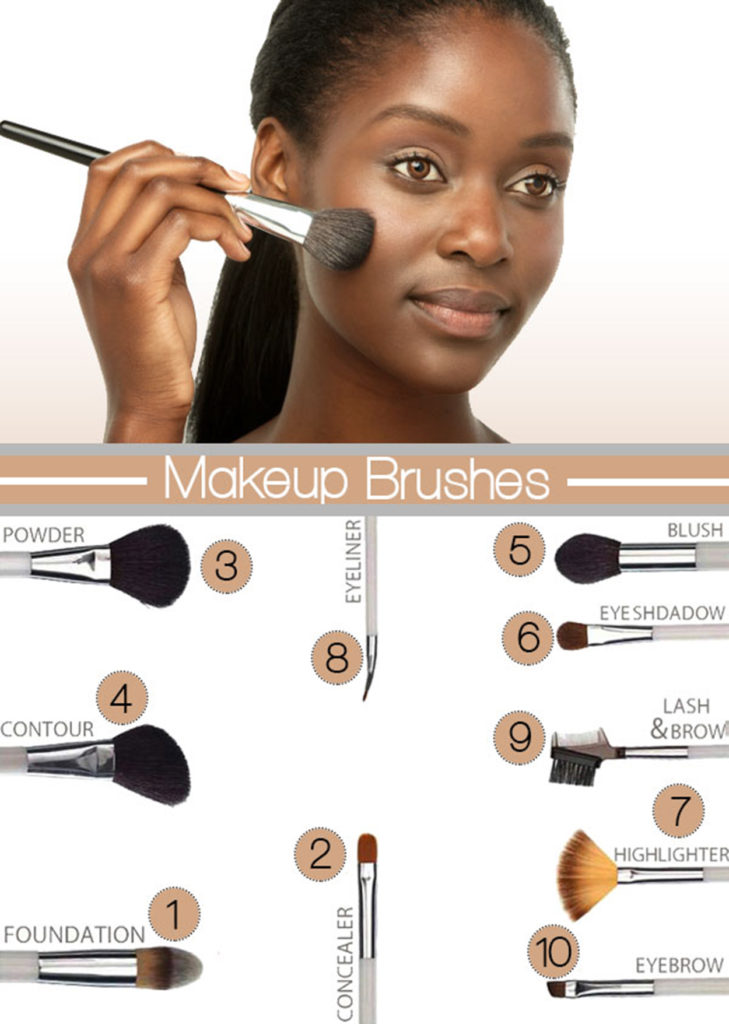
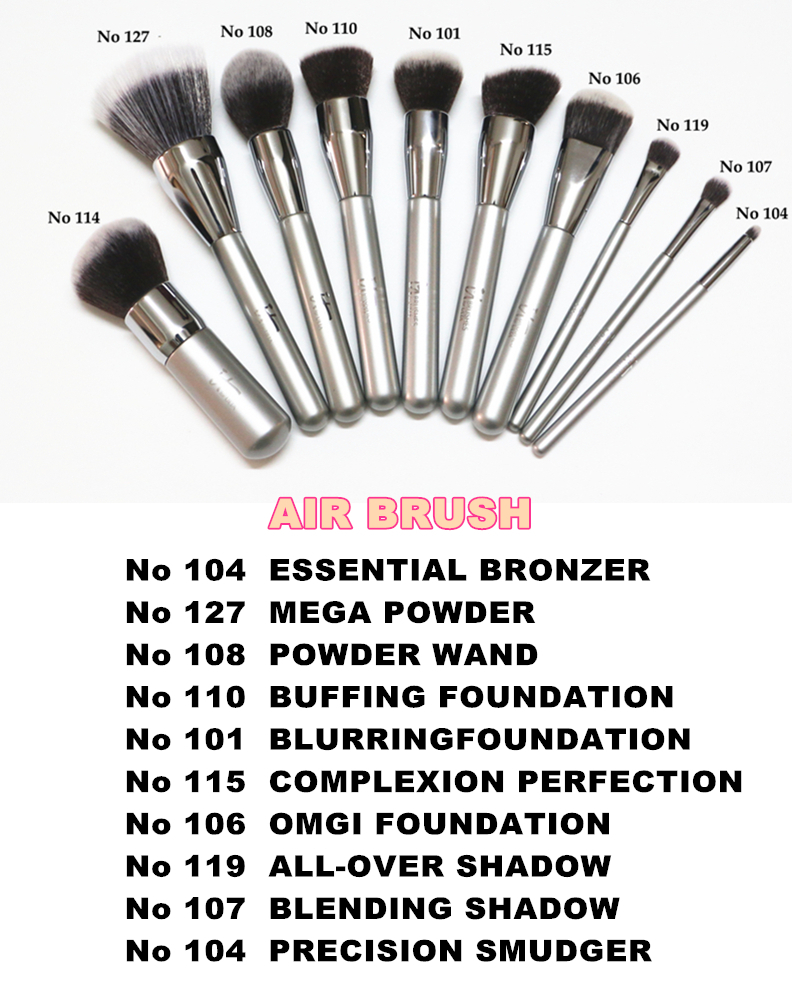
Click the image to enlarge
Click Image to enlarge
Most Makeup brushes fall into two categories: the ones made with animal hair and the ones made with synthetic bristles. Today’s synthetics are actually had become better than the animal-hair brushes and that is the opinion of many of my pears, for many practical reasons. Even do the feel of a high-quality synthetic brush may be similar to an animal-hair one, there are actually many differences between the two.
- Synthetic brushes made of nylon or polyester filaments are less likely to become damaged by the makeup itself or products you might use to clean your brushes they dry really fast when you clean them, aside from not holding bacteria like animal hair brushes they don’t deteriorate as much and they are easy to restore once they get to bend.
- Synthetic brushes are easier to keep clean because they don’t absorb the makeup pigment like animal hair does especially after continuous cleansing, animal hair opens up the cuticle of the hairs, just give it a thought what would happen if you apply makeup or any other painting product to your hair daily and clean it hopefully after every time you use your hair for it, how damage do you think your hair would get and take in consideration that your hair gets nutrients like blood and oils from your body, the paint brushes made with animal ar made with dead hair no more oil or blood supply, with that said the hair gets damage fast, especially when they are not taken care of properly. This means wear-and-tear on the Synthetic brushes.
- Synthetic brushes are better for creating a soft, layered look they spread the makeup more evenly without over rubbing and irritation.
- Some people are sensitive or allergic to the animal hair that some brushes are made from, including squirrel, mink, sable and horse hair and some are of animals that you don’t really want to know. Synthetic brushes are better suited for people with those sensitivities aside is no animal cruelty involved in the prosses.
- Synthetic is a great brush option for you if you are vegan and vegetarian, Or you have compassion for the suffering of animals.
- Benefits: Synthetic brushes are unique in that the bristles naturally gravitate toward each other, allowing for more precise, smooth and streak-free application. Due to the fact that the hairs’ precise properties, they are great for angled, sharply cut brushes.
- Synthetic hair is great for cream and liquid products – including foundation, cream blush, gel liner and concealer. It is able to not absorb so much of the product and apply a smooth finish to the skin without much streaking.
- For any cream and liquid product including lipsticks.
- Unlike natural brushes, synthetic brushes don’t “trap” and absorb makeup between bristles, which means that you’ll use less product than you would with fluffier natural brushes. Synthetic brushes tend to be flatter and smoother than natural bristles, which makes them ideal for precision.
Face Brushes
- Foundation A brush with long, flat bristles and tapered tip
- Powder A brush with fluffy bristles; soft, full and rounded
- Fan brush – similar to a fan painting brush, used for light touches and even playing mascara and soft blush
- Blush brush – fine bristles and rounded head
- Concealer brush – soft and flat with a pointed tip and a wide base and some of them with a flat curved tip
- Kabuki brush – very thick and rounded with a short handle
- Duo fiber multipurpose brush – flat, circular and feathery head
- Mineral powder brush – thick and rounded for the most part
- Face Contour Brush – Slanted and rounded for cheekbones
- Face Sponge – Varied Shape, Sponge Texture
Eyes
- Eyeshadow brushes
- basic eyeshadow brush
- crease brush
- lid brush
- contour brush/blending brush
- Angle eyeshadow brush – small, soft and rounded angled tip
- Eyeliner brush – very thin and fine with soft bristles
- Blending eyeshadow brush – long with a round head
- Smudge brush – flat and soft
- Mascara (usually comes with the mascara) or you can purchase the disposable mascara wand your using it in different people.
- Eyebrow brush – long, thin with tougher bristles ( like a thin toothbrush)
- Slanted Eyebrow Definer Brush – Stiff and Angeled
- Spiral brush for use to comb on any shot small hair and to apply color
Lips
- Lipstick brush – fine, soft and tapered
- Lipgloss brush (usually comes with the lip gloss)
Here are some sites to find out about animal cruelty is no joke we don’t wish to participate in hurting animals for products that can easily be replaced with excellent performance products that are non-animal cruelty.
Are the animals harmed when they give up their hair? If we have the common sense that is a given they do not take them to a Beauty Salon that is for sure. According to caringconsumer.com, mink and sable brushes often use hair obtained from the fur industry, which is known for trapping and killing animals for their pelts, often by gassing or electrocuting to avoid damaging the hair nice right?. Horsehair commonly comes from horses slaughtered for meat, goats are shorn like sheep (and they suffer cuts and other injuries) we won’t place the photos we have, they are horrific!! Squirrels are hunted or trapped, breaking legs and for the most part damaged to death!!! not to mention traumatized. Some manufacturers obtain their hair supplies from other countries,( like China) where animal welfare regulations are either lax or nonexistent, I lived in China and there were no regards for animals in general.
“Companies that claim that they are cruelty-free,” says Peggy Hannaman-Jones, founder of the Branded J Collection, “claiming they are shaving the animals and using shed hair from animals are incredibly deceiving themselves and others, to say the least. It is simply not true! All hair is bought through fur farmers all over the world.” We are definitely not interested in participating in hurting anything, Period!!
Let’s talk about the Oval brush
Matthew Waitesmith the former senior vice president at MAC Cosmetics was the one that reinvented the tools not just for professionals, but for novices, too. Apparently MAC had introduced these type of brushes some years ago but they are getting super popular now because They blend products super fast and easy not to mention extremely well and the important thing for me is that uses very little product so you save all the way around, the only part for me is the Palette, where you are supposed to place product to avoid cross-contaminating. You throw away the pads, not really for me, too much waste and not much benefit. An expensive, wasteful gadget to me.
These brushes prove the claim to provide a uniform application with their dense, microscopically small and soft fibers which is absolutely true. They really are amazing blenders I must say.
It provides superior blending with an ultra-fine tip which blends on a microscopic level, creating patterns so small they are imperceptible with the naked eye and provides a very gentle feel during application of makeup. Great for mature skin, they are super gentle and get in very small little creases.
It provides efficient use of a product with a uniform surface area of each CosmeFibre which helps pick up and lay down product without holding on to it. CosmeFibre is made of a proprietary material that has some shape memory which retains shape so much better than conventional animal hairs and it doesn’t change your brush shape at all. Be conscious of the cleansing and how hard you push on them, they are not invincible.
Versatile brushes which help the fiber perform well with powders, liquids or emollient-based products.
To help to avoid sensitivities, CosmeFibre provides an excellent animal-free alternative to conventional animal hair makeup brushes. All Artis brushes are 100% Animal-Free!!!! yeah.
The CosmeFibre brushes are made using a high tech manufacturing process that produces completely consistent fibers and is shaped and refined by hand into high-quality fiber bundles. Each brush is hand-assembled to create the artisan-quality Artist Brush.
These brushes are chemically resistant which can resist excess water, alcohol, acids, detergent etc. Artis brushes won’t degrade from brush cleaning formulas. I clean mine with 99% Alcohol and the look brand new
These are also UV resistant and brushes won’t degrade due to sun or light exposure not like animal hair ones.
Modern construction and provides a comfortable fit for holding the brush. The fiber alignment and the tilted handle aid in simplifying application and blending to one’s own face.
High tech resins, metalized plating, and durable monofilaments are used to help make the brush more dependable and durable over its lifetime of use.
All in all, I absolutely love them.
http://features.peta.org/cruelty-free-company-search/index.aspx
http://www.crueltyfreekitty.com/ultimate-guide-to-cruelty-free-makeup/
Synthetic makeup brushes are, made of synthetic bristles. Sometimes they are dyed to look just like natural brushes — to a dark cream or brown color — but they can also look like white or beige artificial hairs. They can be quite soft as animal hair brushes, but they’re much less expensive and come in many styles and brands. Plus, they’re also much easier to upkeep and don’t shed as animal hair ones.
Brands like Real Techniques, Urban Decay, Too Faced, and EcoTools make exclusively synthetic brushes, and some even have cruelty-free sustainable objectives. On the EcoTools website, they make it clear that their brushes “are beautiful and show respect for the earth and its beings.”Let’s keep the earth and animals unharmed there is no need to do anything that can cause pain or destruction do.
Today’s synthetic makeup brushes are not your grandma’s super stiff nylon bristles from the old days. So if you only know the name “Taklon” it’s time to expand your beauty knowledge. Today’s modern synthetic fibers, such as Tafre and Natrafil, offer excellent “pickup and payoff” of powder makeup, in addition to liquids and creams.
For decades now, the conventional procedure in makeup application is that you should use a synthetic makeup brush when applying liquid or cream makeup products and a real natural animal hair brush for powder and blending applications a bit much for me at least.
Usually, this advice is even attached to explanations that sound perfectly reasonable, such as the (true!) fact synthetic brushes are more hygienic for applying foundation to clean, bare skin.
But the real reason for this longstanding advice – which has become severely outdated in just the last 5 years – is that traditional synthetic brushes have never been very good at picking up powder compared to brushes made with real animal hair.
That’s because the cuticle of the real animal hair is covered in DEAD cells that form scales (isn’t that a great thought), which are layered along the hair shaft in specific shingle patterns. Sometimes these scale layers can run 12 layers deep, providing lots of nooks and crannies that serve as little scoops to pick up powder makeup particles and ultimately deposit them on the skin, and with that said the powder or makeup stay in there also mixed with Skin cell and oils Hmmmm!.
Each animal, in fact, has a different shingle pattern that offers unique characteristics in picking up and depositing makeup, as described in these forensic FBI files. This document from Silver Brush in Windsor, NJ, explains the differences between many animal hair variations when it comes to applying paint. And this catalogue from Crown Brush explains many of the differences when it comes to makeup application keeping in mind that a good artist can acomplish the top results with even their fingres, is not the tool what does it is the talent.
To date, goat remains the most popular makeup brush on the market. But pony, squirrel, badger, boar and sable have remained popular in some circles for their unique cuticle qualities even do synthetic brushes are perfectly good. In fact, Kolinky Sable brushes are highly cherished by makeup artists as well as painters, because of their ability to achieve the finest of point shapes and again the new non-animal brushes can accomplish the same.
The Trouble With Animal Hair — The Animals!
Beginning in 2013, however, US federal authorities began seizing shipments of Kolinsky hair brushes because of the Convention on International Trade in Endangered Species of Wild Fauna and Flora to provide protection to more than 35,000 species of animals and plants, we are so glad for that. PETA explains in this article that many of these animals are killed for their hair alone .and not for their meat at all!!!!
So, as you can see, using real animal hair brushes in makeup brushes has gotten, well, pretty complicated from an ethical and compassion standpoint and pretty expensive when you consider an animal must be caught or raised, slaughtered, skinned and then the hair has to be cleaned and sorted into different grades is that what we really want to do? when are other choices?
And to be honest, it’s never been the most hygienic option because those layers of scales that create the cuticle can trap all sorts of dirt and oil and are a popular breeding ground for bacteria.
Aside from allergies to animal hair — and many women have them — there are many other issues that come with using animal hair in brushes.
Most cosmetics brands today only want to use animal hair in brushes if the animal was not killed specifically for their hair. Because that would, obviously, be cruel. And when you’re applying pretty pink blush and lipstick, very few people also want to think of dead animals. In fact, squirrel brushes (which set the softness standard) have pretty much been eliminated from the landscape because of a widespread industry practice to stop killing them for their hair alone.
DuPont has been a continued leader in developing synthetic makeup brush fibers that outperform the fibers of the past. From nylon and Taklon to more modern cosmetic brush fibers, such as Natrafil and Sorona, which is used to make Tafre, today.
But if the animal was, say, slaughtered for its meat — goat is the most widely consumed meat in the world — and the hair was a byproduct of food consumption, the beauty industry has mostly still been okay with that.
Sometimes, an animal need not be killed at all for its hair, although it’s often more expensive to acquire animal hair humanely. When Wayne Goss says his brushes were made with natural goat hair “gathered humanely,” it certainly raises more questions than it might answer for some, like, precisely how was it gathered humanely?
Then, once the brush makers have the animal hair, there are also issues with the quality — or grade of the hair — and the consistency of its color, among other factors. When a brush maker is making a huge product line of brushes for, say, the Estee Lauder brand, where all the brush hair needs to be consistent, these issues can be significant. That’s why a lot of brush hair is still dyed, which you can see color bleeding from your brushes after washing sometimes.
What’s more, natural hair also has to be well cleaned and sanitized because of all those little scales along the cuticle trap dirt and bacteria.
So ultimately, real animal hair can be unethical, expensive and problematic.
Early Synthetic Fibers
Because of these challenges with real animal hair, a lot of makeup brush manufacturers and their suppliers have been hard at work developing more sophisticated synthetic makeup brushes that behave as good or better than real animal hair or older model synthetic fibers.
The earliest synthetic makeup brushes on the market were straight up nylon and were stiff, flat fibers with a totally flat – microscopically speaking – surface structure. That’s why powder products really don’t stick to them; the powder literally slides off.
If you’ve ever tried to apply a dark eyeshadow with a synthetic brush, you are likely familiar with what a fallout disaster can look like.
Taklon, just like nylon, was originally developed by DuPont, the American chemical company based in Delaware. Taklon is made out of thermoplastic polyester — sometimes referred to as PBT, which stands for polybutylene therephthalate — to mimic the characteristics of natural sable. It is a bit softer than the earliest nylon brushes and a touch better at picking up powder than nylon, but not by much.
Taklon also has a tapered point, and sometimes Taklon, whose rights are now owned by the Toray Chemical Co. of Osaka, Japan, is generically referred to as “tipped polyester.” real-techniques
You can still find plenty of cheap nylon and Taklon brushes on the market today, and some brush manufacturers have gotten pretty clever to try to get them to work better with powders.
Today, for example, nylon and Taklon are made in a range of sizes, and the diameter affects the stiffness and softness of the brush, with the narrowest diameter fibers being the softest with the most sway.
By mixing together various diameters – or denier – of these early synthetic fibers, or by getting clever with the toe shape, brush makers have been able to enhance the pickup and payoff characteristics of certain synthetic makeup brushes.
Take a look, for example, at the severely raked side of the brush toe on a Real Techniques brush, and you’ll see how a clever toe shape, with the end of every strand strategically placed, can improve powder pickup by using the tip, primarily, to pick the product up.
But the real holy grail in synthetic fibers has been replicating goat hair, the real workhorse fiber of the beauty industry in terms of makeup powders – and, perhaps, enhancing the antibacterial properties of the brush at the same time.
Already familiar with the opportunities of the enormous makeup brush market, DuPont’s Filaments group has been hard at work trying to solve these problems.
Around 2010, DuPont launched Natrafil, which takes another polyster fiber and roughs up the surface structure microscopically with some texturizing additives in a complex and patented process, resulting in a structured surface. Just like natural cuticle, this rough microscopic structure helps the fiber pick up powder as well or better than goat or pony hair.
In today’s competitive beauty market, however, some brush manufacturers decided to kick it up a notch, too.
These Tafre-fiber makeup brushes from Japanese brush maker Taiki represent some of the most advanced synthetic makeup brush fibers on the market today. They are for discerning customers that need excellent pickup and payoff of makeup products, from liquid and creams to powder.
The Japanese brush maker Taiki, for example, which has a US headquarters in Montvale, NJ, has developed an all-new patented way of making synthetic fiber with an underlying polyester material.
Basically, Taiki uses DuPont’s Sorona fiber — which is a “PTT,” or poly trimethylene terephthalate — to create a new brand of synthetic fiber, Tafre, that may be the most modern and innovative on the market.
Taiki uses its manufacturing machines to extrude the fiber in a way that is similar to the way hair grows out of the skin on an animal. Which is to say that they twist it and kink it in a patented process that creates a more natural style of fiber. Because they are using DuPont’s Sorona, which contains 37% percent renewable plant-based ingredients — from corn — it’s also considered a green, environmentally friendly fiber. The creation of PBT fibers relies more on fossil fuels.
Compared to nylon, Sorona production uses 40% less energy and reduces greenhouse gas emissions by 56%. Interestingly, Sorona is also used in residential and commercial carpets, apparel and automotive mats and carpets. It’s also highly durable with a high degree of stain resistance!
Matthew Page, Global Segment Leader, for DuPont’s Sorona Automotive group, told My Brush Betty in November that Taiki is the only company using Sorona material in a makeup brush today. “It has high performance and durability,” he explained, “so we see the cosmetics industry as an attractive opportunity.”
The true test of Tafre’s value for me was when I tested an eyeshadow Taiki-Tafre brush with some bright blue shadow after I had already applied all my other makeup. I have hooded eyelids so eyeshadow application is always an issue for me because if brush fiber isn’t soft enough, it will tug on my eyelids, causing fallout and misplacing the color. In this fallout test, the brush performed beautifully. The brush was exceptionally soft, so no tugging. And, maybe even more interesting, no waste! I didn’t have to see all those pretty (expensive) makeup flakes dusting away or making a mess on my cheeks.
In the end, synthetic brushes today — if you choose the right ones — are great for all types of makeup products, from liquids and creams to powders, and they are also more hygienic, less prone to shedding and fallout and ensure a more consistent brush.
So when you buy that same model of brush that you love a few years from now, chances are better it will be just like the one you’re replacing.
Synthetic Word Jumble
Artis-MirrorNow, there are a lot of fancy synthetic fiber names on the market today – and most don’t really explain what they are — so it may be difficult to tell if you’re getting brush made of Tafre or Taklon. Very few sellers of makeup brushes are transparent about the synthetic material used.
For example, the new Alexis Bittar Liquid Gold brushes at Sephora says they have “Satine” fiber, humm! They say it’s “revolutionary” but don’t explain what are they made of. Too Faced says its brushes use “Teddy Bear” hair. Again, that comes with no explanation so just marketing names. The innovative new Artis brushes here use “Cosmefibre,” which comes with just a tad more explanation, but still not as much as I would like for something I’m using on my face every day.
There’s one sure-fire way to get an advanced-synthetic fiber brush: Make sure to test a brush before you buy it by dipping it in some powder to see if it falls off. Just give it a light shake and see what happens. An advanced synthetic will hold onto most of the powder until you actively deposit the powder on your skin.
Most important of all, don’t believe the old adage that synthetics are only good for liquid and cream products. That’s just not true anymore!you can find amazing synthetic brushes that do a great job, we refuse to compromise the safety of animals.
CRUELTY-FREE MAKEUP BRUSHES: SYNTHETIC OR NATURAL?
Is pretty simple for us if it means hurting anything in the process of creating a tool we don’t want to use it, period is no need at all, that is conscious KARMA and nature is not really in alignment with this behavior.
From: http://www.crueltyfreekitty.com/makeup/cruelty-free-makeup-brushes-synthetic-natural/
When it comes to the topic of cruelty-free makeup brushes, there are even more things to consider. If a cruelty-free company offers brushes made from natural hair, does it mean the brushes are cruelty-free? Does it mean that the company isn’t cruelty-free? In this quick guide, I’m going to walk you through all the questions you might have about choosing brushes that are 100% cruelty-free, and share with you my personal opinion on what truly makes a brush animal-friendly.
The term cruelty-free usually strictly refers to animal testing. If a product is cruelty-free, it means that it hasn’t been tested on animals at any point of production or afterward. Cruelty-free does not, however, take into consideration things like animal ingredients, meaning that a product can still be certified cruelty-free by the Leaping Bunny and contain animal ingredients. This is a controversial subject and it’s very subjective where the line between what is and isn’t literally “cruelty-free” can be drawn, but for the sake of clarity: cruelty-free refers to the testing methods, while vegan refers to the ingredients.
As you know, most makeup brushes are made from natural bristles of animal hair. Brushes themselves don’t have to be tested on animals and are often sold by makeup brands that are completely cruelty-free in the sense that they abide by a strict no-animal-testing policy and are sometimes even certified. By this standard, it might be logical to conclude that brushes made from natural hair are also cruelty-free, although not vegan. This might sound right, but I disagree with it 100%, and here’s why.
Where everyone draws the line when it comes to what is and isn’t cruelty-free is sometimes a matter of opinion, and while I have pretty strong convictions given that I’m passionate about living cruelty-free and what it means to me, I also respect most opinions on the subject. And I’ll share my personal opinion with you: I believe that no makeup brushes made from animal hair can be cruelty-free. This applies to the vast majority of brushes, especially those that are cheaply-made in places like China. About 99% of brushes made from Animal hair are, in our opinion, obtained from cruel methods that can be just as cruel as animal testing.
Many companies claim that the hair used in their makeup brushes is obtained through “humane methods” and that the animals only “get a haircut” in the making of those mass-produced brushes. But who are we kidding! Does that sound plausible to you? Even though there’s no real way to prove it, it all sounds like sugar-coating to me. Also remember that a lot of brushes use badger hair and squirrel hair, and in those cases, it’s safe to assume that those small animals are getting more than just “a haircut”. So there you go: I believe that buying synthetic, or vegan, brushes is the safest way to ensure that your makeup tools are cruelty-free.
That being said, I still support cruelty-free companies that sell natural hair brushes under their brand, although I will personally not buy or recommend buying their animal hair brushes. Sonia Kashuk is an example that comes to mind: the company is cruelty-free and their makeup brushes are excellent, but I only choose to buy their synthetic ones. It’s a matter of preference, as well as where you personally draw the line. If you’re a cruelty-shopper and still buy non-synthetic brushes, I’m not here to preach. After all, the official message of these brands is that their animal hair brushes are, indeed, cruelty-free.
Where do you draw the line? Do you avoid all animal ingredients? Are you fine with all animal ingredients, or do you only buy cosmetics that contain some of them, like beeswax, and avoid others? Or like me, do you draw the line at animal hair brushes?
Today, there are more cosmetic companies than ever focused on quality products that are cruelty-free and eco-friendly.
Aveda offers brushes with bristles made from taklon (a non-animal fiber) and handles made of 30% natural flax fiber and 70% polypropylene (of which 90% is post-consumer recycled resin), making them not just animal-friendly, but environmentally-friendly as well.
The Body Shop, which does not test its products on animals (neither does its suppliers) or sell brushes made from animal hair, offers good-quality synthetic brushes in different shapes and sizes for different applications. Whether you’re adding a touch of pink to your lips or a soft finish to your forehead, consider the variety of its synthetic brushes available.
From the Body Shop I selected one of my favorites the Eyeshadow Brush item #10611, the brush is a high-quality makeup brush even though they sell it as an eyeshadow brush which I use it often for and love, the brush is great for concealer detail and anything else you find a use for, so often people ask me what brush I use with which products and my answer is always whatever works for you. There are really no rules, companies design brushes to work for different uses and to provide us with bigger selections and more product, to tell you the truth all of us that use brushes on everyday terms, have our favorites that we adopt.
My last bit on this brush, I like that the brush handle bottom is flat and I can place the brush standing up, easy for me to grab and it doesn’t get product all over my setup.
NVEY ECO, originally from Australia but you can order its products online, offers certified organic makeup products. Along with that the company sells makeup brushes with bristles made of synthetic fibers, not animal hair, and include the world’s first compostable makeup brush handle Hummm why would we want to compost our make up brush handles? not sure well intended do. None of the ingredients in the company’s products are made from ingredients derived from genetically modified crops, nor does it use mineral or petroleum oils.
Urban Decay is known for its creative and alternative colors (along with product names like Smog and Acid Rain and Oil Slick) and for its cruelty-free and certified vegan products. Check out its “Good Karma” line of brushes made from recycled plastic bottles and aluminum. Now that is Eco-friendly reusing products that other way contribute to solution great solution.
In Urban Decay brushes I would like to go over a few of them that I have tried lately.
Let’s start with Good Karma Optical Blurring brush, (the blurring name is probably referring to blending I assume), The brush is very good at blending. I use it especially with clients that favor mineral makeup. For me, it is easy to handle and blends very well. It works with cream foundations, liquid foundations, and mineral powder foundations even though it was created for Urban Decay’s Naked Skin Weightless Ultra Definition Liquid Foundation.
The brush bristles are amazingly soft, it just glides. Not only do I like the feeling but the idea that it seams very gentle on the skin, which is a concern for me, too much pulling and rubbing can cause IRRITATION!and that combined with products no so good especially for the long term.
The brush is very easy to clean and dries very fast, another great plus for me being that it is synthetic. it is not bacteria friendly and won’t cause allergies for people that have animal hair allergies, not to mention CRUELTY-FREE. The brush is medium size with a dome head. Very easy brush to manipulate for chin area, nose area, and eyes if you choose to. And to ad another quality that I admire, the fact that it comes in a container to store it, great to keep sanitized.
EcoTools, All materials used in the EcoTools collection are earth-friendly and include tree-free paper, a natural hemp blend, recycled plastic lining, as well as non-toxic inks. The brushes are made with recycled aluminum, bamboo, and synthetic bristles.
For more information on synthetic versus animal hair makeup brushes click here
Super Synthetics
from: http://www.peta.org/living/beauty/synthetic-make-brushes/
There’s no reason to use animal-hair brushes, especially when there are so many high-quality synthetic brushes available. Check out these companies’ luxurious offerings:
-
Circa Brushes
Carries a line of makeup brushes that use high-quality, hand-cut synthetic hair. Eva Mendes is the creative director for this cruelty-free beauty brand, available exclusively at Walgreens.
- wet n wild is sending a positive message to cosmetics companies around the world: It dropped all animal hair from its makeup brushes and went vegan!
- Branded J knows that animal-hair brushes aren’t just bad for animals—they’re also bad for your skin. Unlike animal-hair brushes, which are loaded with dead skin cells, bacteria, and chemicals that can cause your skin to break out Branded J’s collection of custom-cut taklon brushes is animal-friendly, anti-bacterial, and awesome for applying make-up.
- The Body Shop knows that if you wouldn’t put on makeup using your cat’s tail, you don’t want to use any other animal part, either—its brushes don’t contain animal hair.
- Ecco Bella Botanicals has a range of non-animal brushes that complement its cruelty-free cosmetics.
- Paris Presents’ EcoTools makeup brushes are made with cruelty-free taklon bristles, sustainable bamboo handles, and other natural and recyclable materials to keep you and the Earth looking beautiful. Alicia Silverstone is a celebrity fan of these luxurious-yet-affordable brushes, which can be found in many drugstores.
- For professionals and newbies alike, It Cosmetics offers a large selection of high-quality brushes to help you apply makeup smoothly and accurately.
- Garden Botanika brags that its 100 percent taklon brushes are actually softer than those made from fur, allowing more makeup to cling to the brush and providing a smoother application.
- Origins Natural Resources brushes look and feel like animal hair, but don’t worry—they’re cruelty-free just like the rest of Origins’ personal-care products.
- Urban Decay Good Karma brushes tickle your face using synthetic taklon.
- Aveda brushes are also made of taklon, with a flax-infused, recycled-resin handle. They’re animal- and environment-friendly!
- Nanshy uses only super-soft synthetic hair in its brushes—and its lush vegan brushes are famous for their durability, flexibility, and easy maintenance.
- Sevi Cosmetics‘ 100 percent taklon brushes are the perfect complement to its vegan makeup. No cruel animal testing and no creepy animal ingredients!
- Valana Minerals knows that “[t]here is no need to sacrifice quality or animals in the pursuit of beauty.” Its six luxurious synthetic makeup brushes are perfect for applying Valana’s cruelty-free and vegan powder, foundation, blush, bronzer, and eye color.
- Afterglow luxe professional cosmetics brushes are uniquely designed to provide a beautiful, flawless finish. Handmade of the highest quality taklon, they’re super soft and ideal for applying loose mineral makeup evenly.
Cruelty-Free Makeup Brushes
Review – Synthetic Makeup Brushes – Cruelty-free – ELF & Eco Tools No Animal Hair from CrueltyFreeQTs
Cleaning your brushes
I personally clean my brushes every time I use them. When I work I use individual bags for the actors with their brushes and their makeup, it is a great way to avoid cross-contamination and breakouts. One of my mentors taught me to use 99 % alcohol for several reasons, one being that it kills bacteria in contact another is that dries very quickly so no more bacteria or fungus mold can grow on the brushes inside the ferrule. The alcohol doesn’t damage the brushes at all contrary to what one would believe. I have over 500 brushes and use them for years and they are in perfect shape. The commercial Brush cleaners tend to have scents that can cause allergies, Skin breakouts, and contain Petroleum byproducts like oils that get in the Farrell of the Brushes (that is the metal cylinder that holds the hair to the Brush handle ) it doesn’t let it dry and bacteria grows there. they are more expensive and a lot less quantity and it leaves a residue on the brush that I personally don’t wish to place on the actor’s skin is not made for that. I get a Gallon of 99 % Alcohol and it lasts me for several months. Is too much risk of contamination to take so have a Brush Cleaning Party with your friends!!!
ZOREYA(TM) Makeup Brushes 15pc High-End Real Walnut Handle Makeup Brush Set with free case
KENZIE BEAUTY 10 PCS Oval Makeup Brushes Set
Uniqcare Electric Makeup Brush Cleaner and Dryer- Professional, Automatic
We use 99% Alcohol with the Brush cleansing Machine nothing else
ABCsell Acrylic Makeup Cosmetic Organizer Display Stand For 10pcs Toothbrush Foundation Brush RD
SaveSave
SaveSave
SaveSave
SaveSave
SaveSave
SaveSave
SaveSave
SaveSave
SaveSave
SaveSave
SaveSave
